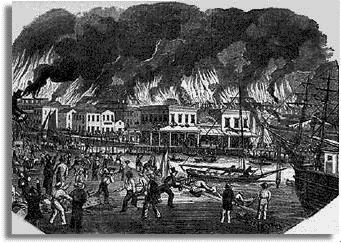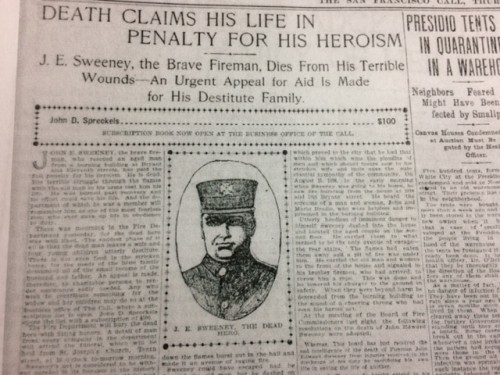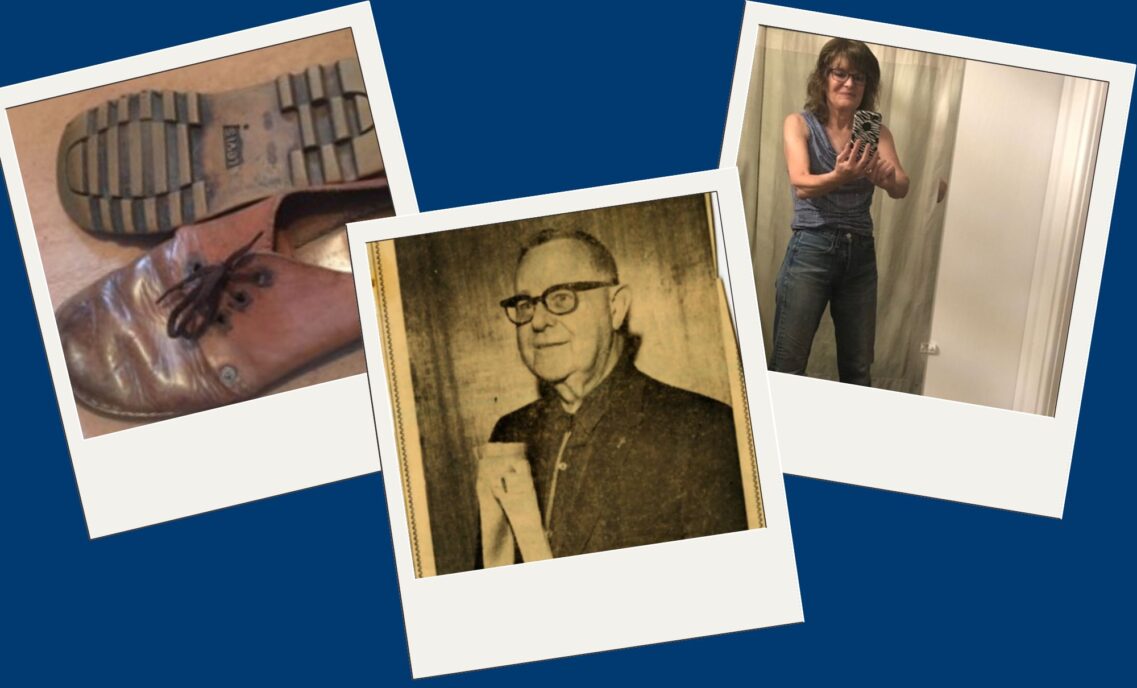We’ve been talking a lot about water this week (read more here and here and take the quiz to find how much water your jeans use). Today, we turn to another topic related to water conservation and drought: fire. As our home state enters its fourth year of drought, parched landscapes are at an increased risk for fires. In the early days, Levi Strauss & Co. experienced devastation as a result of fire on multiple occasions.
As many of our stories do, this one begins in San Francisco, a city whose history is also the history of urban fires.
When San Francisco was a quiet outpost of Mexico, with just a few hundred residents, fire wasn’t a problem. But after its population exploded during the Gold Rush, successive waves of fires tore through the city, which was constructed mostly of canvas tents and creaky wooden buildings. There were six major blazes between 1848 and 1851 alone. In 1850 some residents and merchants began to rebuild in brick or stone, adding iron shutters both for protection and theft deterrence. People who came to San Francisco in later years always heard about the horrors of fires, and often experienced them.
Levi Strauss & Co. was one such example. On June 13, 1875, there was a fire at an unnamed piece of property owned by the company, or possibly at the headquarters. That information did not make the newspapers, but the follow-up did: on July 5, the company held a dinner in honor of the Fire Patrol, for saving the aforesaid property.
Levi himself seems to have been particularly concerned about fire dangers. His name was on a letter sent to the San Francisco Board of Supervisors in April of 1879. This letter was signed by a huge collection of merchants, politicians, and property owners. They were outraged at the supervisors’ decision to remove limits on the number of wooden buildings that could be put up in the financial and industrial district. This, they felt, was “…decidedly against the well-being and safety of the whole city.”
They had to do it again in 1890. A smaller, but still vocal group of businessmen wrote to local organizations such as the Chamber of Commerce, the Board of Trade, etc. They felt the city was “…unprepared to cope with a conflagration,” because San Francisco did not have proper fire-fighting equipment and a fully-paid Fire Department.
Even with improvements to the department, flames were always a danger. In December of 1895 a huge fire consumed $300,000 worth of property in the financial district, where LS&Co. headquarters were located. In today’s currency, that is a staggering $8 million. Levi Strauss & Co.’s basement was damaged by the water used to put out the fire in the building next door. It could have been worse; Captain Comstock’s Fire Patrol quickly pumped the water out of the building and kept it from backing up and damaging the packing and shipping department.
When fireman John E. Sweeny lost his life rescuing a man from a burning building in June of 1900, the entire city got together to raise money for his widow and children. Levi Strauss personally gave $50 to the fund, which is about $1,400 in today’s money. He also probably attended one of the benefits which the merchants of the city organized.
By far the action which shows just how much Levi appreciated the city’s fire department came after his death in September of 1902. When his will was read, it included a gift of $500 for the Firemen’s Mutual Aid Society, worth $14,000 today. This is the organization that helped to take care of injured firefighters and the families of those who lost their lives on the job. On October 4, a check for the $500 was handed to Fire Chief Dennis Sullivan, who said the bequest “…came in the nature of a pleasant surprise” to the department.
What Levi never knew was that 4 years later, on April 18, 1906, an earthquake sparked 3 days of fires that destroyed the company’s headquarters, factory, and entire inventory. He would probably have been philosophical about the material losses, knowing that he could rebuild, which is what his nephews did. But he would have been profoundly sad to know that much-loved and respected Fire Chief Dennis Sullivan lost his life on that terrible April day.
Feature image courtesy of U.S. Geological Survey










